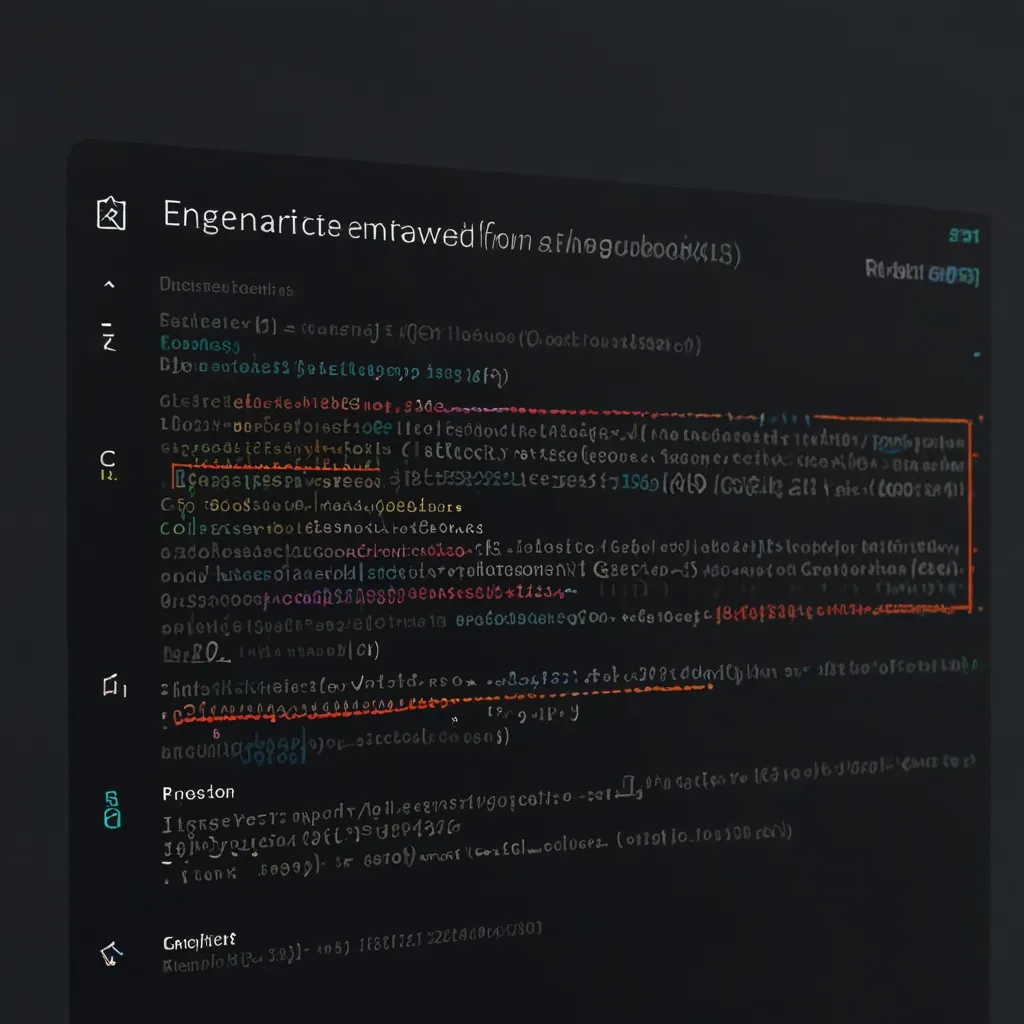Ready to become a CLI wizard? Let’s dive into the world of custom Node.js command-line interfaces! Building your own CLI might sound intimidating, but trust me, it’s a fun and rewarding experience. Plus, it’ll make you feel like a coding superhero.
First things first, let’s talk about why you’d want to create a CLI. Maybe you’re tired of repetitive tasks, or you want to streamline your workflow. Whatever the reason, a custom CLI can be a game-changer. I remember the first time I built one – it felt like I’d unlocked a whole new level of productivity.
To get started, you’ll need Node.js installed on your machine. If you don’t have it yet, head over to the official Node.js website and download the latest version. Once that’s done, open up your terminal and let’s get coding!
The heart of any Node.js CLI is the package.json file. This little guy holds all the important info about your project. Create a new directory for your CLI and run npm init to set up your package.json. When prompted, give your CLI a cool name – something that’ll make other developers jealous.
Now, let’s add some magic to make our CLI executable. Open up your package.json and add this line:
"bin": {
"your-cli-name": "./index.js"
}
Replace “your-cli-name” with whatever you want to type in the terminal to run your CLI. Cool, right?
Next up, create an index.js file in your project directory. This is where the real fun begins. At the top of the file, add this shebang line:
#!/usr/bin/env node
This tells the system to use Node.js to execute your script. Now, let’s add some code to make our CLI do something awesome:
#!/usr/bin/env node
console.log("Welcome to the coolest CLI ever!");
Save your file and run npm link in your terminal. This creates a symlink to your CLI, allowing you to run it from anywhere on your machine. Now, type your CLI name in the terminal, and boom! You should see your welcome message.
But wait, there’s more! A CLI that just prints a message isn’t very useful. Let’s add some interactivity. We’ll use a popular package called “commander” to handle command-line arguments and options. Install it by running npm install commander.
Now, let’s update our index.js to use commander:
#!/usr/bin/env node
const { program } = require('commander');
program
.version('1.0.0')
.description('The coolest CLI ever')
.option('-n, --name <name>', 'Your name')
.action((options) => {
console.log(`Hello, ${options.name || 'stranger'}!`);
});
program.parse(process.argv);
This code sets up a simple CLI that takes a name as an option and greets the user. Try running your CLI with your-cli-name --name John, and you’ll get a personalized greeting!
Now, let’s add some color to make our CLI pop. Install the “chalk” package with npm install chalk, and update your index.js:
#!/usr/bin/env node
const { program } = require('commander');
const chalk = require('chalk');
program
.version('1.0.0')
.description('The coolest CLI ever')
.option('-n, --name <name>', 'Your name')
.action((options) => {
console.log(chalk.green(`Hello, ${chalk.bold(options.name || 'stranger')}!`));
});
program.parse(process.argv);
Run your CLI again, and you’ll see a colorful greeting. Fancy, huh?
But what if we want our CLI to do something more substantial? Let’s add a command that fetches a random joke from an API. We’ll use the “axios” package for making HTTP requests. Install it with npm install axios.
Update your index.js once more:
#!/usr/bin/env node
const { program } = require('commander');
const chalk = require('chalk');
const axios = require('axios');
program
.version('1.0.0')
.description('The coolest CLI ever');
program
.command('greet')
.description('Greet the user')
.option('-n, --name <name>', 'Your name')
.action((options) => {
console.log(chalk.green(`Hello, ${chalk.bold(options.name || 'stranger')}!`));
});
program
.command('joke')
.description('Get a random joke')
.action(async () => {
try {
const response = await axios.get('https://official-joke-api.appspot.com/random_joke');
const { setup, punchline } = response.data;
console.log(chalk.yellow(setup));
console.log(chalk.cyan(punchline));
} catch (error) {
console.error(chalk.red('Failed to fetch joke:', error.message));
}
});
program.parse(process.argv);
Now you have two commands: your-cli-name greet and your-cli-name joke. The joke command fetches a random joke from an API and displays it in your terminal. How cool is that?
As your CLI grows, you might want to split your code into multiple files for better organization. Create a “commands” directory and move each command into its own file. Then, in your index.js, you can dynamically load all the commands:
#!/usr/bin/env node
const fs = require('fs');
const path = require('path');
const { program } = require('commander');
const commandsDir = path.join(__dirname, 'commands');
fs.readdirSync(commandsDir).forEach(file => {
require(path.join(commandsDir, file))(program);
});
program.parse(process.argv);
This approach makes it easy to add new commands without modifying your main file.
Remember, a great CLI is all about user experience. Add helpful error messages, progress indicators for long-running tasks, and clear documentation for each command. You can use packages like “ora” for spinners and “inquirer” for interactive prompts to make your CLI even more user-friendly.
As you continue to develop your CLI, consider adding unit tests to ensure everything works as expected. Jest is a popular testing framework for Node.js that works great for CLI applications.
Finally, don’t forget to publish your CLI to npm so others can use it! Run npm login to log in to your npm account, then npm publish to share your creation with the world.
Building a custom Node.js CLI is an exciting journey. It’s a chance to flex your coding muscles and create something truly useful. I still remember the thrill of seeing my first CLI in action – it’s like watching your code come to life in the terminal.
So, what are you waiting for? Start building your CLI today and join the ranks of command-line heroes. Who knows, your CLI might be the next big thing that developers can’t live without. Happy coding!






